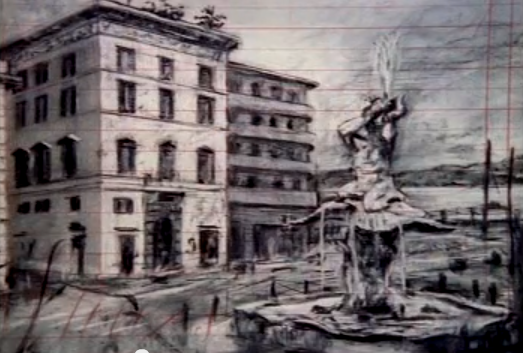CHARCOAL INSPIRATION:
William Kentridge
Looking for a little inspiration for your charcoal practice? Our new series, Charcoal Inspiration, offers up artists and works that have taken the art of charcoal drawing to new heights, pushed it towards new horizons, and inspired us.
“The activity of drawing is a way of trying to understand who we are and how we operate in the world.” -- William Kentridge
In our first installment, a closer look at the work of charcoal master William Kentridge, a South Africa based artist whose deeply emotive, highly expressionistic charcoal drawings have been called “a wormhole to the sublime.”
With a career spanning more than three decades, Kentridge’s multi-disciplinary portfolio includes drawing, film animation, collage, illustration and performance. His charcoal practice, however, first came to wide attention in the late1980’s when, as an artist, he turned to charcoal to depict daily life in South Africa under apartheid. His heavy use of line, shading, and shadow evocatively put to paper the psychic heaviness and dystopic darkness of the lives of those living under oppression in South Africa, a theme which continued in his work for some time.
In the 90’s, however, it was Kentridge’s use of charcoal as an illustrative medium for film that brought him worldwide attention and acclaim. His ongoing series of stop action films, which he calls “Drawings for Projection” virtually depict the artist’s hand at work: rendered completely in charcoal, a gorgeous detailed and delineated street scene might darken then fade with only the marks of erasure left in its wake. Lines of text scrawl manically, or loop elegantly in and out of frame as Kentridge draws them, then erases them, then draws them again, creating an effortlessly atmospheric patina on the page.

Generally around eight minutes long, Kentridge’s films are highly contextual – street scenes, a man in his bedroom – that take the typically static form of charcoal drawing, bring it to life and give it endless narrative possibilities as the thoughts seemingly embodied in his drawings morph to new thoughts, and time seems to move on.
Have a look at Kentridge’s brilliant “Automatic Writing,” three minutes of which is available here, for a better understanding of what these brilliant films are about.
"My drawings don't start with a 'beautiful mark'," Kentridge once wrote about the practice of artists “letting the hand lead the brain.” As an artist emblematic of a certain style at least related to neo-expressionism, his goal is always depiction and context, a practice that necessarily, to some extent, requires the brain to lead the hand. "It has to be a mark of something out there in the world,” Kentridge has said. “It doesn't have to be an accurate drawing, but it has to stand for an observation, not something that is abstract, like an emotion."
Interested in trying your own low-tech version of “drawing for projection”? Watch the artist do it himself here, and let the charcoal take you where it will.
William Kentridge is represented by Marian Goodman Gallery of New York, and his full biography and images of his work can be found here.

